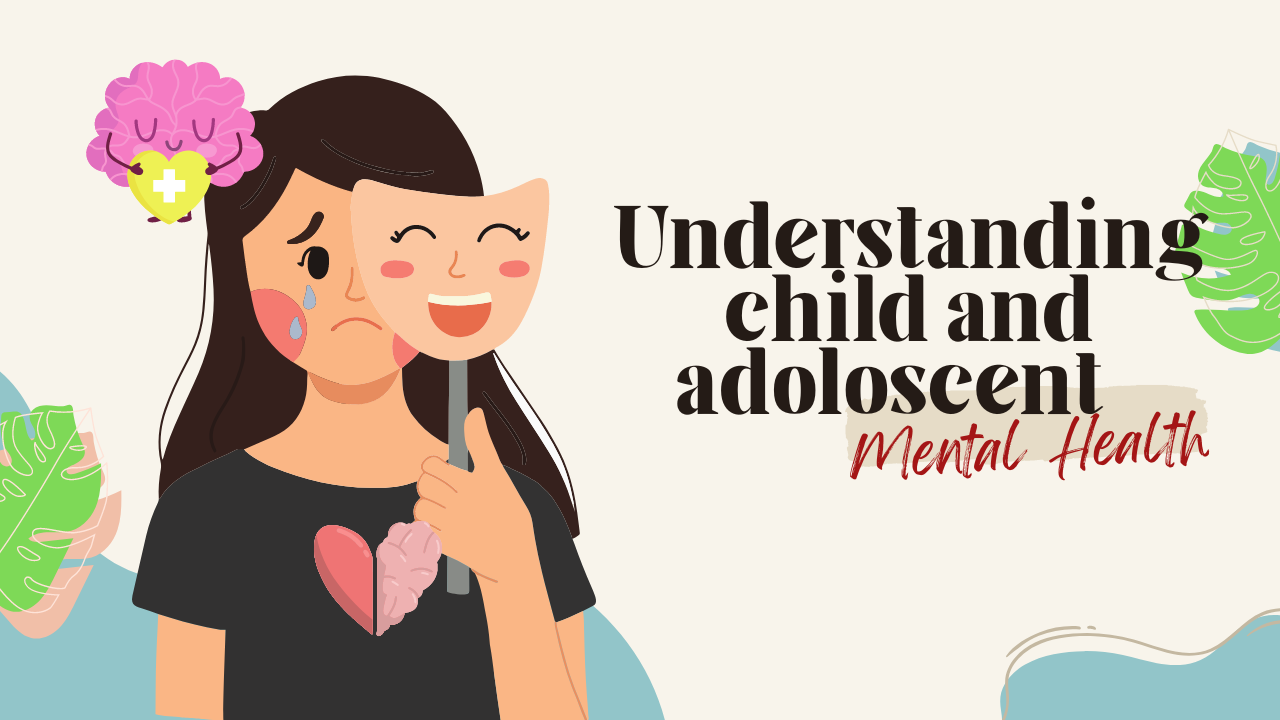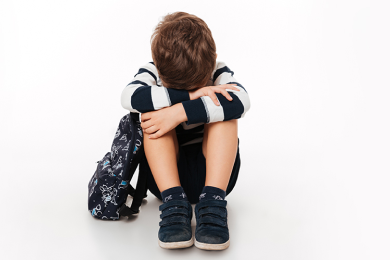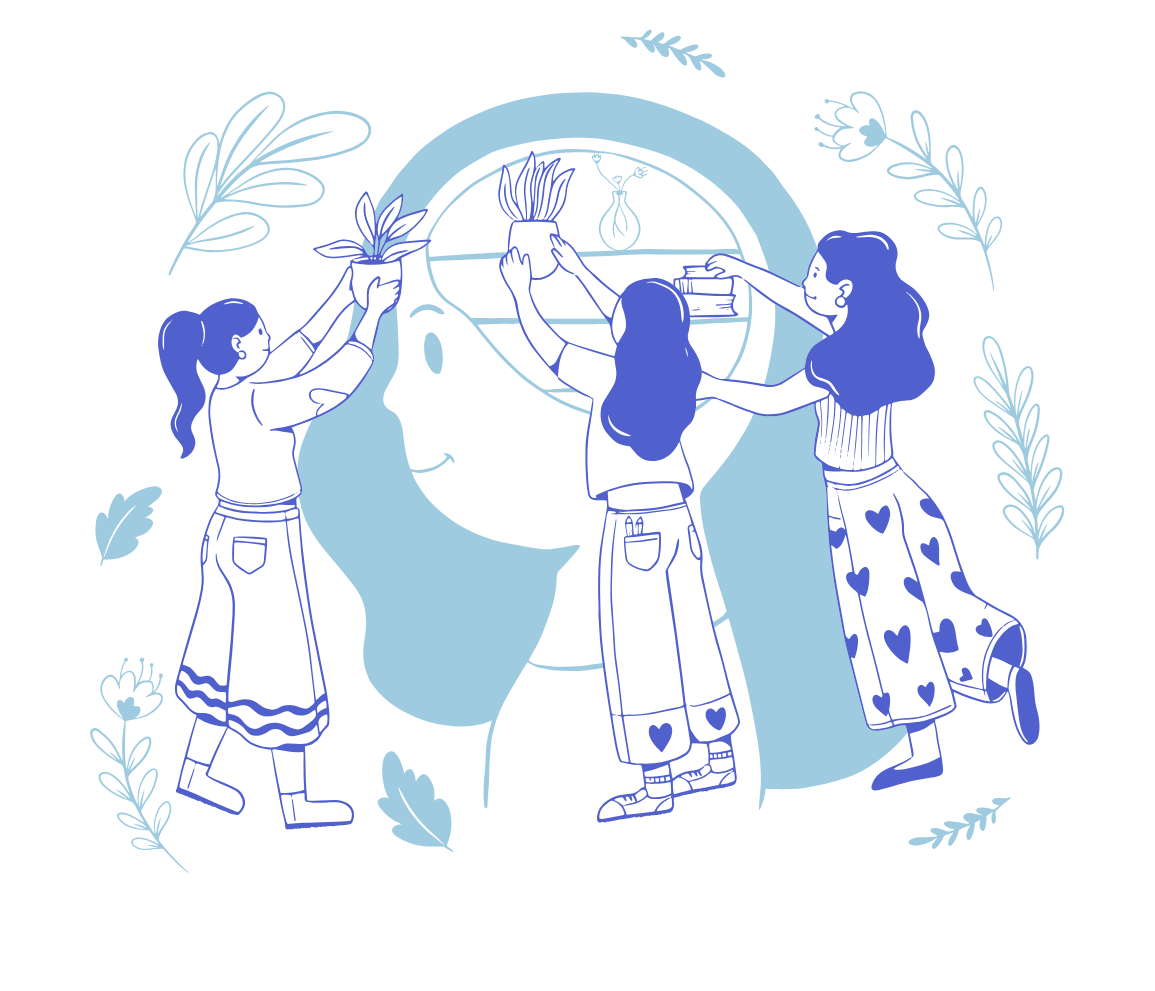

Child and Adolescent Mental Health
Childhood and adolescence are critical stages of life for mental health. This is a time when rapid growth and development take place in the brain. Children and adolescents acquire cognitive and social-emotional skills that shape their future mental health and are important for assuming adult roles in society.
Adolescence (10-19 years) is a unique and formative time. Multiple physicals, emotional, and social changes, including exposure to poverty, abuse, or violence, can make adolescents vulnerable to mental health problems. Promoting psychological well-being and protecting adolescents from adverse experiences and risk factors that may impact their potential to thrive is critical for their well-being during adolescence and their physical and mental health in adulthood. The quality of the environment where children and adolescents grow up shapes their well-being and development. Early negative experiences in homes, schools, or digital spaces, such as exposure to violence, the mental illness of a parent or other caregiver, bullying, and poverty, increase the risk of mental illness. Adolescents with mental health conditions face more risk of social exclusion, discrimination, stigma (affecting readiness to seek help), educational difficulties, risk-taking behaviors, and physical ill-health and human rights violations.
Mental health determinants
Adolescence is a crucial period for developing and maintaining social and emotional habits important for mental well-being. These include adopting healthy sleep patterns; taking regular exercise; developing coping, problem-solving, and interpersonal skills; and learning to manage emotions. Supportive environments in the family, at school, and in the wider community are also important. Factors that can contribute to stress during adolescence include a desire for greater autonomy, pressure to conform with peers, exploration of sexual identity, and increased access to and use of technology. Media influence and gender norms can exacerbate the disparity between an adolescent’s lived reality and their perceptions or aspirations for the future. The quality of their home life and relationships with peers also determine their mental health. Violence (including harsh parenting and bullying) and socioeconomic problems are recognized risks to mental health. Children and adolescents are especially vulnerable to sexual violence, which has a clear association with detrimental mental health.
Some major child and adolescent mental health issues
Emotional disorders
Adolescents with Emotional disorders can also experience excessive irritability, frustration, or anger. Symptoms can overlap across more than one emotional disorder with rapid and unexpected changes in mood and emotional outbursts. Younger adolescents may additionally develop emotion-related physical symptoms such as stomach ache, headache, or nausea.
Emotional disorders can profoundly affect areas like schoolwork and school attendance. Social withdrawal can exacerbate isolation and loneliness. At its worse, depression can lead to suicide.
Childhood behavioral disorders
Childhood behavioral disorders are the second leading cause of disease burden in young adolescents aged 10-14 years. Childhood behavioral disorders include attention deficit hyperactivity disorder (characterized by difficulty paying attention, excessive activity, and acting without regard to consequences, which are otherwise not appropriate for a person’s age), and conduct disorder (with symptoms of destructive or challenging behavior). Childhood behavioral disorders can affect adolescents’ education and may result in criminal behavior.
Eating disorders
Eating disorders commonly emerge during adolescence and young adulthood. Eating disorders affect females more commonly than males. Conditions such as anorexia nervosa, bulimia nervosa, and binge eating disorder are characterized by harmful eating behaviors such as restricting calories or binge eating. Eating disorders are detrimental to health and often co-exist with depression, anxiety, and/or substance misuse.
Psychosis
Conditions that include symptoms of psychosis most commonly emerge in late adolescence or early adulthood. Symptoms can include hallucinations or delusions. These experiences can impair an adolescent’s ability to participate in daily life and education and often lead to stigma.
Suicide and self-harm
Suicide is the third leading cause of death in older adolescents (15-19 years). Nearly 90% of the world’s adolescents live in low-or middle-income countries and more than 90% of adolescent suicides are among adolescents living in those countries. Risk factors for suicide are multifaceted, including harmful use of alcohol, abuse in childhood, stigma against seeking help, barriers to accessing care, and access to means.
Risk-taking behaviors
Many risk-taking behaviors like substance use or sexual risk-taking, start during adolescence. Risk-taking behaviors can be both an unhelpful strategy to cope with poor mental health and can severely impact an adolescent’s mental and physical well-being.
Risk-taking behaviors may involve heavy episodic drinking, use of tobacco and. Many adult smokers have their first cigarette before the age of 18 years. Perpetration of violence is a risk-taking behavior that can increase the likelihood of low educational attainment, injury, involvement with crime, or death.
What is the solution?
Counseling and therapy interventions can help an individual’s capacity to regulate emotions, enhance alternatives to risk-taking behaviors, build resilience for difficult situations and adversities, and promote supportive social environments and social networks.
It is crucial to identify and address the needs of adolescents with mental health conditions. Avoid placing them away from family to rehabilitation centers or other similar institutions as it may have a disruptive effect on children’s emotional and intellectual development, prioritize psychological intervention like counseling and therapy over medicines, and respect the children and adolescents with mental health conditions. These can be the starting point. For expert help please connect with a counselor or therapists near you. You may also find them online.


